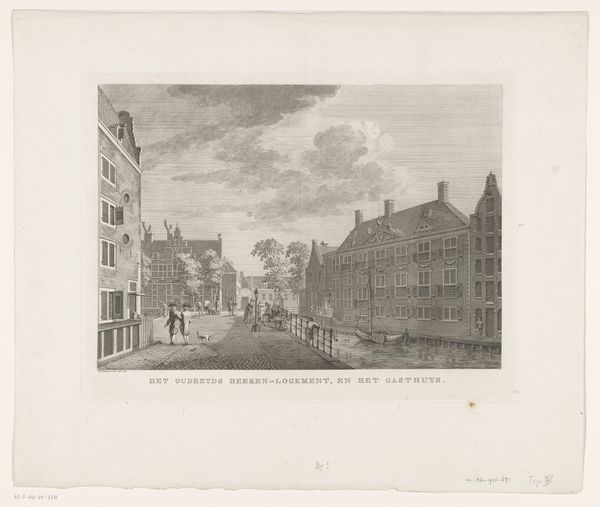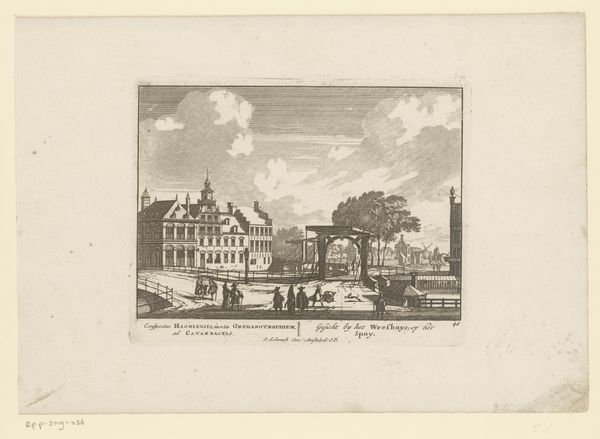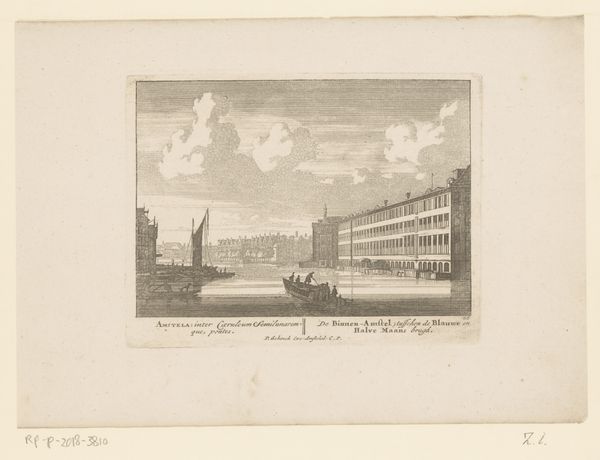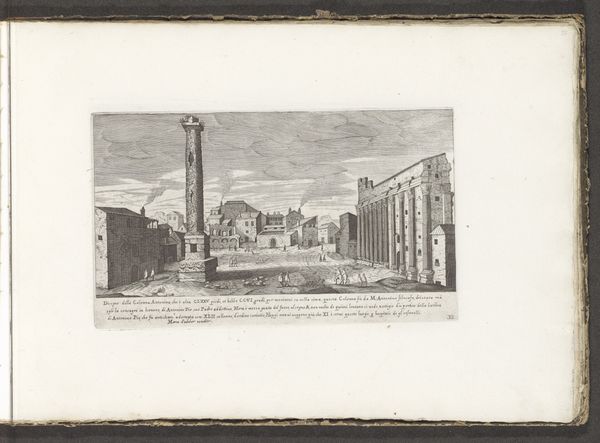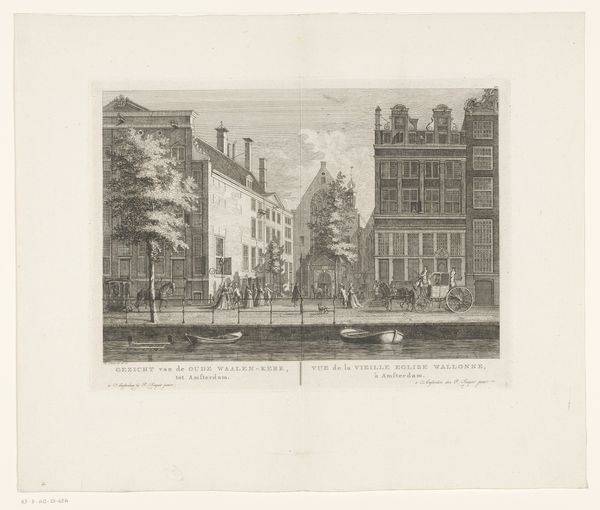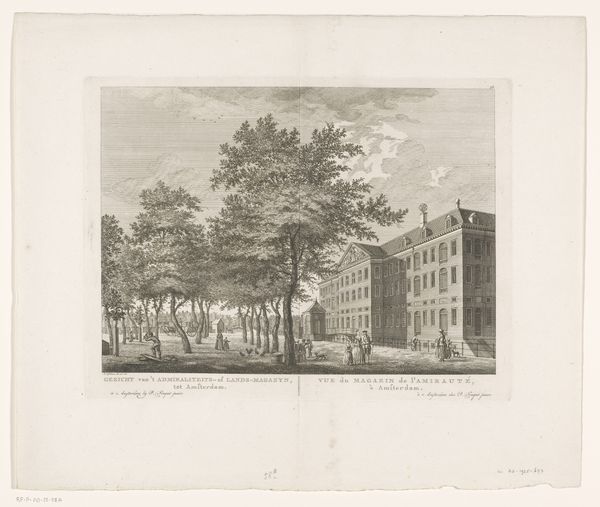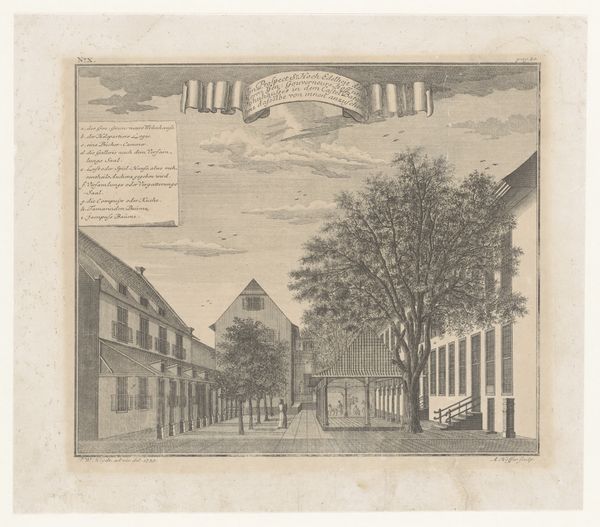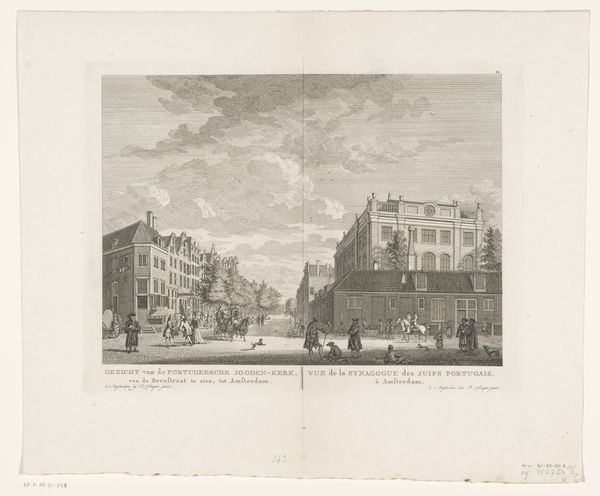
print, etching, pen, engraving
#
baroque
#
dutch-golden-age
#
ink paper printed
# print
#
etching
#
old engraving style
#
landscape
#
pen-ink sketch
#
pen work
#
pen
#
cityscape
#
engraving
Dimensions: height 130 mm, width 168 mm
Copyright: Rijks Museum: Open Domain
Editor: Here we have "View from the Koekamp to the Leidsebrug," a cityscape by Jan van Call, dating back to around 1700. It's an etching, so ink on paper. The precision of the lines depicting this Dutch Golden Age scene is quite striking, but also a bit static. What captures your attention in this piece? Curator: What interests me is less the depicted image, but more how that image came to be. Look at the marks made to create this view. These lines are a result of labor: the labor of the artist, the labor of the etcher who transferred the design onto the metal plate, and even the labor of the printing press that transferred the image to paper. How do we value the work embedded within its creation? Editor: So, you’re thinking about the process, the hands that actually made it. The "who" and "how" inform the final piece... Curator: Precisely. And consider the social context: Who would have bought such a print? What kind of consumption was this? These prints would have served multiple purposes: architectural documentation, records of property, promotion of a certain civic image. Editor: That is a good point; perhaps this seemingly objective image of a place is actually trying to do quite a lot, functioning within commercial and cultural economies of its time? Curator: Think, also, about the etcher's studio – was it a family business, or perhaps run more like a small factory with specialized labor? The production and dissemination of these prints speaks volumes about the developing commercial landscape of the Dutch Golden Age. Editor: That certainly changes my perspective! I initially saw just a nice depiction, but now I appreciate that it embodies a network of social and economic activities. It is labor made visible. Thanks. Curator: It's about considering art as a product of labor, as well as a reflection of broader societal values and economic structures. Hopefully you and our audience will reflect on these contexts and apply the ideas when examining any artistic production.
Comments
No comments
Be the first to comment and join the conversation on the ultimate creative platform.

